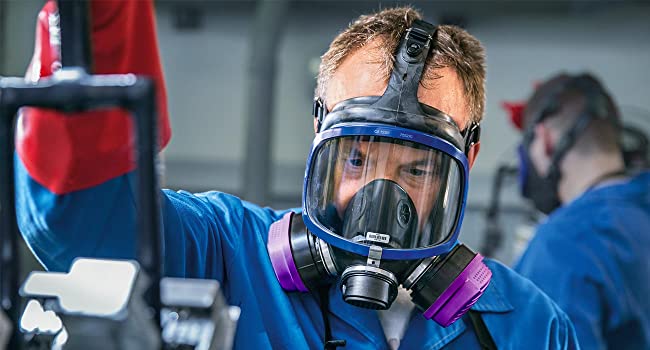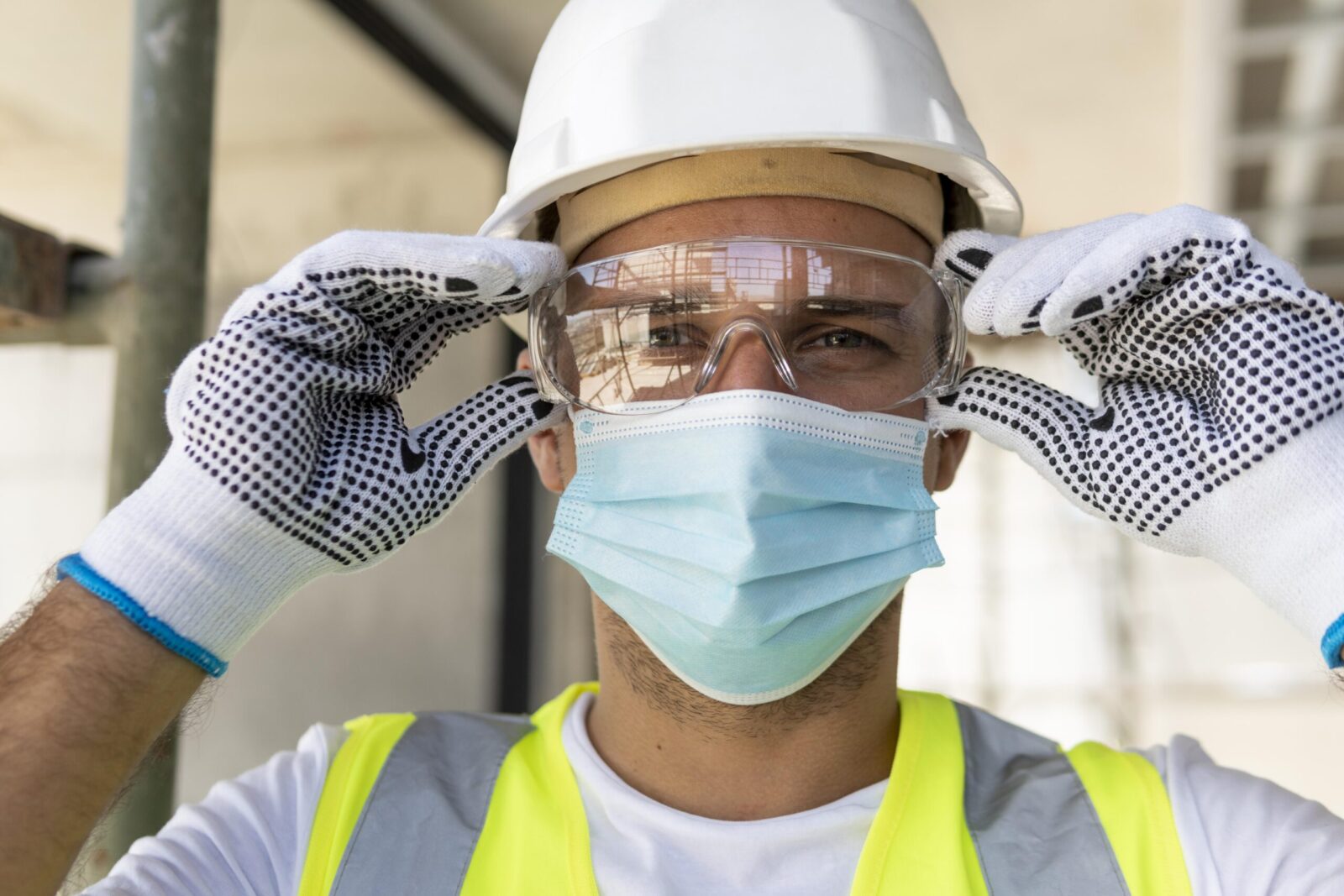
Essential PPE in the Food Industry: What You Need to Know
Overwhelmed by PPE options for food safety? Master your PPE selection for food workers safety with these practical tips.

Get 20€ off on your first order!
Choosing between a full-mask and a half-mask respirator can be tricky, but by the end of this article, you’ll know exactly which one suits your needs. We’ll guide you through the key differences in protection, comfort, and cost, ensuring you make an informed choice based on your work environment.
With expert insights on features, ideal uses, and maintenance tips, you’ll feel confident in selecting the best respirator for your safety. Plus, we’ll help you solve the next step—choosing the right filters and cartridges to keep you protected long-term. Let us provide the perfect solution for your needs!
For a comprehensive overview of full-mask respirators, explore our main article, “How To Choose The Right Full Mask Respirators – A Buyer’s Guide.”
Full-mask respirators cover your entire face, including the eyes, nose, and mouth, providing reliable protection against particulates, gases, and vapors. Half-mask respirators shield only the nose and mouth, focusing on respiratory protection. Both fall under the broader category of Personal Protective Equipment (PPE) and serve different levels of protection depending on the environment., designed to shield you from airborne hazards, including particulates, gases, and vapors.

| Feature | Full-Mask Respirator | Half-Mask Respirator |
| Coverage | Full face (eyes, nose, mouth) | Lower face (nose, mouth) |
| Protection Level | Enhanced | Standard |
| Weight | Heavier | Lighter |
| Cost | Higher | Lower |
| Eye Protection | Yes | No |
| Ease of Use | Requires more training | Simpler to use |
| Maintenance Required | Moderate | Low |
| Best for | Demanding environments, e.g., chemical labs | Moderate-risk environments, e.g., woodshops |
Full-mask respirators provide comprehensive respiratory and eye protection, making them suitable for demanding environments. These include:
For those seeking full-mask respirators for such applications, visit our product category page.
Half-mask respirators are a practical choice for:
Explore our range of half-mask respirators.
Both types of respirators rely on filters and cartridges to function effectively. It’s essential to select the appropriate type based on your work environment. For an in-depth look at filters and cartridges, check out “Filters and Cartridges: Choosing the Right Components for Your Respirator.”
While full-mask respirators generally have a higher initial cost, their durability and extended usability make them a worthwhile investment. Half-mask respirators are more affordable upfront but may require additional gear, such as goggles, to provide equivalent protection in specific scenarios.
For a more detailed exploration of related PPE, check out these resources:
Additionally, our disposable respirators are a practical option for light-duty protection. Pairing these with appropriate PPE, such as safety goggles, enhances overall safety.
We hope this guide has provided valuable insights into choosing the right respirator for your safety needs, from understanding the key differences between full-mask and half-mask options to selecting the ideal fit for your work environment. Whether you’re handling demanding tasks like chemical handling or working in construction, we’re here to support you in making the best decision for your protection.
Explore the full range of respirators on Droppe, where trusted brands and high-quality options are just a click away.
Have questions or need assistance in selecting the perfect respirator? Check out our comprehensive buyer’s guide or feel free to reach out—we’re always here to help ensure your safety and confidence in every purchase.
– The Droppe Team
Full-mask respirators offer higher protection by covering the eyes, nose, and mouth, while half-mask respirators only cover the nose and mouth.
Half-mask respirators are better suited for moderate-risk environments, like construction. Full-mask respirators are recommended for high-risk areas, such as chemical labs.
Full-mask respirators are heavier and may require more adjustment, while half-mask respirators are generally lighter and more comfortable for extended wear.
Yes, since half-mask respirators don’t cover the eyes, you’ll need separate goggles or safety glasses for full protection.
Regularly inspect for wear, clean after each use with recommended solutions, and store it properly in a dry, clean place to prolong its lifespan.
Thank you! You've signed up for our newsletter.



















Overwhelmed by PPE options for food safety? Master your PPE selection for food workers safety with these practical tips.

Struggling to maintain clear vision in demanding environments? This guide is here to help. By the end, you’ll know exactly...

Electricians across Europe face unique challenges that require reliable safety glasses to ensure both protection and efficiency. Whether safeguarding against...

Overwhelmed by PPE options for food safety? Master your PPE selection for food workers safety with these practical tips.

Struggling to maintain clear vision in demanding environments? This guide is here to help. By the end, you’ll know exactly...

Electricians across Europe face unique challenges that require reliable safety glasses to ensure both protection and efficiency. Whether safeguarding against...
Get 20€ off on your first order!
Save 30% by buying directly from brands, and get an extra 10€ off orders over €100
Save 30% by buying directly form brands, and get an extra 10€ off orders over €100